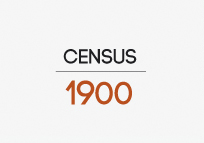




BELGIAN SOCIETY IN HISTORIC CENSUSES
Population census 1900
Concepts
The census of 1900 was executed based on specific guidelines that require some further explanation.
1. Place of residence
The different population categories are distinguished in the statistics based on the legal population (“population de droit”). Below residents are understood to mean those who had a legal domicile in a certain location. The instructions stipulated that conscripts had to be counted in their family's municipality. Monks and nuns had to be counted at the residences where they were posted (instead of the monastery or convent that they were subject to).
The permanent address of those sick in hospitals, shipmasters and people without a fixed abode was the municipality where these people were last registered or, in the absence of this, their place of birth. In earlier censuses, many of these people were registered on the collective family form of the institution where they were staying temporarily. People with a residence in several municipalities had to be counted in the municipality where they declared that they spent the most time. If this information was lacking then preference was given to the municipality with the largest population.
2. Family
Family was defined as a unit that usually lived in the same residence and lived together, regardless of the number of people and any family ties. Every orphanage, monastery, convent, boardinghouse, house of worship and other collective residence was regarded as a family as long as the residents stayed there permanently.
3. Language
Those subject to the census were asked to name the national languages in which they were fluent, in other words that they could speak. Deviating from previous population censuses, children who could not speak yet were not classified under the language of the parents. They were regarded as people who do not speak any language. This principle was upheld in later censuses.
3. Dwelling
A dwelling (“maison”) is a building or subdivision of a building that is intended for housing. Buildings that were not intended to provide shelter for people are distinguished in the statistics. This last category includes factories and public buildings, regardless of whether they were inhabited by concierges or other people.